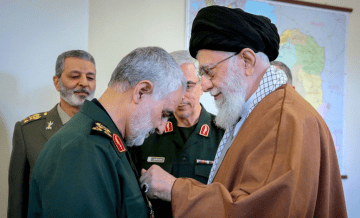John Krzyzaniak in the Bulletin of the Atomic Scientists:
 Early Friday morning, Qasem Soleimani, the head of the Iranian Revolutionary Guards Corps Quds Force, was killed on the drive back from the international airport in Baghdad, Iraq, in a US drone strike authorized by President Trump.
Early Friday morning, Qasem Soleimani, the head of the Iranian Revolutionary Guards Corps Quds Force, was killed on the drive back from the international airport in Baghdad, Iraq, in a US drone strike authorized by President Trump.
Soleimani has been at the helm of the elite Quds Force since 1998, and it’s difficult to overstate his importance. In the Atlantic, Andrew Exum, former US deputy assistant secretary of defense for Middle East policy, wrote that “from a military and diplomatic perspective, Soleimani was Iran’s David Petraeus and Stan McChrystal and Brett McGurk all rolled into one”—referring to two former US military generals and a former special presidential envoy.
Some had speculated that Soleimani, given his popularity in Iran, might one day run for president. But that would have arguably been a demotion; as leader of the Quds Force, Soleimani reported directly to Iran’s Supreme Leader, commanded more than 10,000 troops, and essentially set Iran’s Middle East policy. Indeed, after the assassination, US Sen. Chris Murphy referred to Soleimani as the “second most powerful person in Iran.” In the Senator’s estimation, then, Soleimani ranked in power above the Iranian president, the speaker of the parliament, the head of the judiciary, and even the chief of staff of the armed forces in Iran.
More here.
